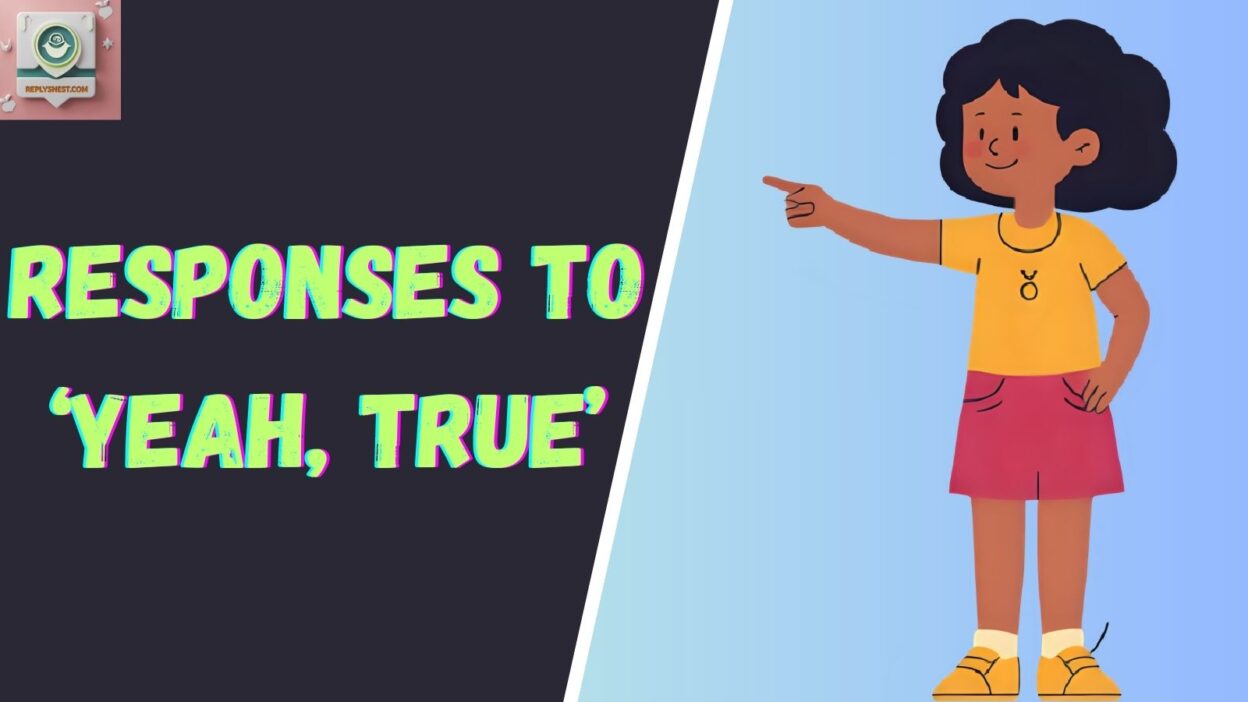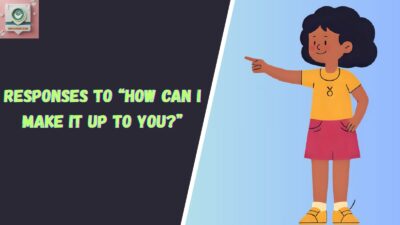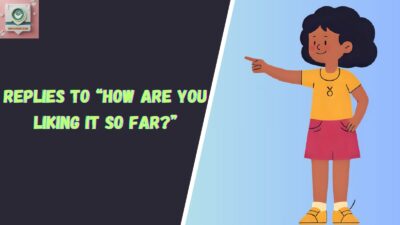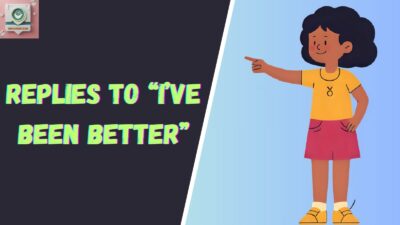When someone says “Yeah, true”, it can feel like the conversation is dead in the water. In my experience, the way you handle this response can turn a simple phrase into an engaging back-and-forth. I’ve often responded with a quick affirmation like “Absolutely, you nailed it!” or “No doubt about that, my friend.” These words acknowledge the point, show you’re with them, and keep the tone positive. Responses to ‘Yeah True’’.
Sometimes, I’ll add a personal touch: “That’s the reality, I’ve been there myself,” or “Exactly right, I couldn’t agree more.” Such responses not only maintain engagement but also steer the direction toward shared experiences, making the person feel heard and valued.
Other times, I go for a mix of humor and curiosity. I might ask an open-ended question like, “What makes you say that?” or “Tell me more—how did that happen?” If the tone calls for lightness, I’ll throw in a playful line such as “Totally, and pigs can fly!” or “Oh, 100%, no doubt!”—especially when I want to add a spark of fun. In professional settings, I’ve found that clear, precise replies like “I concur, the facts are accurate” or “Indeed, that’s correct” work well to show mutual agreement without losing momentum.
Whether the goal is to clarify, relate, or encourage, the right mix of words, tone, and context will keep things flowing smoothly and prevent the dreaded one-word dismissal.
1. Absolutely
Saying “Absolutely” shows strong agreement and enthusiasm. It conveys confidence in what the other person is saying.
Best use: When you genuinely agree and want to affirm the point enthusiastically.
Not use: Avoid overusing it in casual chats, or it may sound overly formal.
Other ways to say: Definitely, For sure, Without a doubt
Example:
Friend: “That movie was amazing.”
You: “Absolutely! The storyline kept me hooked the entire time.”
Read More: Synonyms for “In Time of Need”
2. I Agree
Simple and clear, “I agree” is straightforward and professional.
Best use: Perfect in professional or serious conversations.
Not use: Avoid in casual or playful contexts; it may sound flat.
Other ways to say: You’re right, I feel the same, True that
Example:
Colleague: “We need to submit the report by tomorrow.”
You: “I agree. Let’s prioritize it first thing in the morning.”
3. Exactly
“Exactly” emphasizes precise agreement and understanding.
Best use: When you want to mirror the speaker’s point with emphasis.
Not use: Avoid using it sarcastically; it can be misunderstood.
Other ways to say: Precisely, Spot on, That’s right
Example:
Friend: “We should start early to avoid traffic.”
You: “Exactly! Leaving by 6 AM is perfect.”
4. That’s Right
Polite and validating, “That’s right” confirms correctness.
Best use: Best in conversations where validation or reassurance is needed.
Not use: Avoid repeating too often; it can feel mechanical.
Other ways to say: Correct, You got it, Absolutely
Example:
Friend: “Healthy food really boosts energy.”
You: “That’s right. I’ve noticed I feel much better after eating fresh meals.”
5. Couldn’t Agree More
Expresses total agreement with strong enthusiasm.
Best use: For heartfelt conversations or when expressing genuine passion.
Not use: Avoid in casual, light-hearted chats; it might sound exaggerated.
Other ways to say: Totally, Exactly my thought, I second that
Example:
Friend: “Reading is the best way to expand your mind.”
You: “Couldn’t agree more! I can’t go a day without at least a chapter.”
6. Definitely
Clear, concise, and enthusiastic, “Definitely” is versatile.
Best use: In professional or casual discussions where affirmation is needed.
Not use: Avoid using repeatedly in the same conversation—it loses impact.
Other ways to say: Absolutely, For sure, Without doubt
Example:
Colleague: “We should invest in quality tools.”
You: “Definitely. It saves us time and effort in the long run.”
7. True That
Casual, friendly, and commonly used in informal chats.
Best use: Perfect for texting or lighthearted conversations.
Not use: Avoid in formal settings; it may seem unprofessional.
Other ways to say: Exactly, No doubt, You’re right
Example:
Friend: “Monday mornings are the hardest.”
You: “True that! Coffee is my only savior.”
8. You’re Right
Validates the other person’s opinion directly.
Best use: When acknowledgment and politeness are important.
Not use: Avoid sarcastic tone; it can easily be misinterpreted.
Other ways to say: Spot on, Exactly, That’s correct
Example:
Friend: “Exercise helps improve mood.”
You: “You’re right. Even a short walk lifts my spirits instantly.”
9. I Know, Right?
Adds a conversational, friendly vibe to your agreement.
Best use: Casual chats with friends or peers.
Not use: Avoid overusing it; it can sound repetitive.
Other ways to say: Totally, Exactly, I feel the same
Example:
Friend: “This new series is addictive!”
You: “I know, right? I spree-watched all episodes last night.”
10. For Sure
Informal and approachable, “For sure” is easy-going.
Best use: Everyday conversations, texting, or casual discussions.
Not use: Avoid formal contexts; it can feel too casual.
Other ways to say: Absolutely, Totally, Definitely
Example:
Friend: “We should try that new café this weekend.”
You: “For sure! I’ve heard their desserts are amazing.”
11. Couldn’t Have Said It Better
A warm way to show deep agreement with someone’s statement.
Best use: When the other person expressed something thoughtful or meaningful.
Not use: Avoid using sarcastically; it can feel fake.
Other ways to say: Exactly, Spot on, Perfectly put
Example:
Friend: “Patience is key to mastering any skill.”
You: “Couldn’t have said it better. It truly makes all the difference.”
12. Totally
Casual yet emphatic, “Totally” conveys strong agreement.
Best use: Lighthearted conversations, friendly chats, and informal texts.
Not use: Avoid in professional settings—it can seem overly casual.
Other ways to say: Completely, Absolutely, I agree
Example:
Friend: “Summer evenings are the best.”
You: “Totally! The weather feels just perfect for a walk.”
13. I Feel the Same
Shows empathy and mutual understanding.
Best use: When you want to connect emotionally with someone’s point.
Not use: Avoid in debates or disagreements; it may sound weak.
Other ways to say: Same here, Me too, I get you
Example:
Friend: “Working late drains all my energy.”
You: “I feel the same. I usually need a quiet evening to recharge.”
14. Absolutely Right
Reinforces agreement with strong validation.
Best use: For emphasizing correctness in formal or informal settings.
Not use: Avoid repeating it too often; it may sound robotic.
Other ways to say: Spot on, Couldn’t agree more, Exactly
Example:
Colleague: “Clear communication prevents misunderstandings.”
You: “Absolutely right. It’s the backbone of any successful team.”
15. Couldn’t Agree More With That
Expresses wholehearted agreement.
Best use: Heartfelt conversations or moments of strong conviction.
Not use: Avoid in casual text chats; it can seem too heavy.
Other ways to say: Totally, Exactly, I’m with you
Example:
Friend: “Books are gateways to new worlds.”
You: “Couldn’t agree more with that! They’ve changed how I see life.”
16. That Makes Sense
A gentle way to affirm someone’s logic or explanation.
Best use: When responding to reasoning, suggestions, or advice.
Not use: Avoid overuse; it can feel passive-aggressive if repeated too often.
Other ways to say: I see, Totally, Got it
Example:
Friend: “We should plan the trip during the off-season to avoid crowds.”
You: “That makes sense. It will be much more relaxing that way.”
17. Couldn’t Agree With You More
Strong agreement emphasizing alignment with someone’s opinion.
Best use: Use in meaningful discussions or when you feel strongly aligned.
Not use: Avoid in casual chat; it may feel over-the-top.
Other ways to say: Exactly, Fully agree, You got it
Example:
Friend: “Sleep is more important than hustling endlessly.”
You: “Couldn’t agree with you more. Rest is crucial for productivity.”
18. Right On
Casual, confident, and affirmative.
Best use: Informal chats or enthusiastic agreement.
Not use: Avoid in formal writing or professional emails.
Other ways to say: Exactly, Spot on, True that
Example:
Friend: “Music is therapy for the soul.”
You: “Right on! I can’t go a day without listening to my favorite tracks.”
19. Spot On
Indicates precise agreement with accuracy.
Best use: When validating an accurate observation or statement.
Not use: Avoid sarcastic tone; it can be misread.
Other ways to say: Exactly, Absolutely, Precisely
Example:
Friend: “Timing is everything in negotiations.”
You: “Spot on. Being late can cost so much in opportunities.”
20. I See Your Point
Acknowledges understanding while agreeing.
Best use: Polite conversations, professional or casual discussions.
Not use: Avoid if overused; it may sound passive.
Other ways to say: Makes sense, I get it, True
Example:
Colleague: “We should focus on quality over quantity.”
You: “I see your point. High-quality work will impress our clients more.”
21. I Hear You
Empathetic and warm, showing attentiveness.
Best use: Emotional or personal discussions.
Not use: Avoid overuse; it may sound dismissive if repeated mechanically.
Other ways to say: Got it, I understand, Understood
Example:
Friend: “I’ve been stressed with deadlines lately.”
You: “I hear you. It’s been a tough week for everyone.”
22. Exactly What I Thought
Shows alignment in thinking and agreement.
Best use: Informal and professional contexts where shared ideas are discussed.
Not use: Avoid repetition; it may sound boring.
Other ways to say: Same here, Couldn’t agree more, That’s it
Example:
Friend: “The new policy will improve productivity.”
You: “Exactly what I thought. It’s a smart move for the team.”
23. Totally Understand
Empathetic agreement acknowledging perspective.
Best use: Emotional conversations or debates where understanding matters.
Not use: Avoid using it as filler; it loses sincerity.
Other ways to say: I get it, I see, Makes sense
Example:
Friend: “It’s hard to balance work and personal life.”
You: “Totally understand. I struggle with that sometimes too.”
24. Couldn’t Be More True
Heartfelt, emphasizing a universal truth or personal resonance.
Best use: When the statement aligns deeply with personal experience or reality.
Not use: Avoid casual chats; it may sound exaggerated.
Other ways to say: Absolutely, Exactly, So true
Example:
Friend: “Trust takes time to build.”
You: “Couldn’t be more true. Relationships thrive on patience and honesty.”
25. Preach!
Informal, playful, and emphatic agreement.
Best use: Casual, fun conversations among friends or peers.
Not use: Avoid formal or professional conversations; it’s too colloquial.
Other ways to say: Exactly, Spot on, Amen
Example:
Friend: “Self-care isn’t selfish—it’s necessary!”
You: “Preach! I’ve been making time for myself more these days.”
Conclusion
Responding to “Yeah, true” offers a chance to deepen connection, show empathy, and enhance conversation. From casual and playful phrases like “Preach!” to professional affirmations like “Absolutely right”, there’s a response for every context. By thoughtfully choosing your words, you make your communication warm, engaging, and memorable—something that strengthens both personal and professional relationships.
10 Editor’s Picks
- Absolutely – clear and enthusiastic.
- Couldn’t Agree More – heartfelt agreement.
- I Feel the Same – empathetic connection.
- Exactly – precise affirmation.
- You’re Right – polite validation.
- Totally – casual, friendly agreement.
- That Makes Sense – gentle acknowledgment.
- Spot On – accurate validation.
- Preach! – playful, emphatic agreement.
- I Know, Right? – conversational and friendly.



